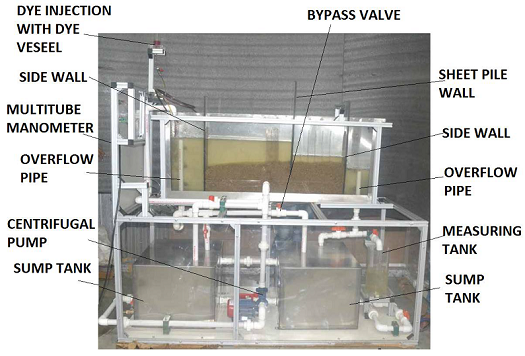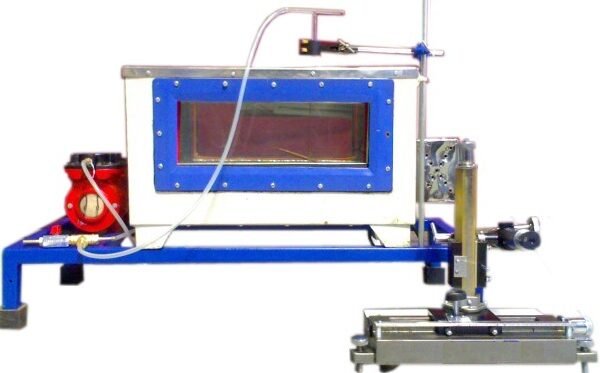Drainage and Seepage Tank Demonstrator Model FM 67
Sci-tech Drainage and Seepage Tank Demonstrator Model FM 67 has been designed for experimental study & visualization of flow through permeable media.
The trainer consists of a Tank with Toughened Glass at front & Aluminum panel at the back. The toughened glass is scratch resistant & permits clear visualization of the process. The tank has two adjustable overflows at each end for maintaining a constant level inside the tank. A dye injection system allows dye to be injected through tapping on the back aluminum panel for visualization for flow pattern through the bed. Water is supplied from the sump tank using a centrifugal pump.
Detailed Operation & Maintenance Manual is provided along with the trainer.
Features
Self-contained unit designed for study of flow through permeable media.
Tank made from non-corrosive materials & has toughened glass at Front for better visualization.










